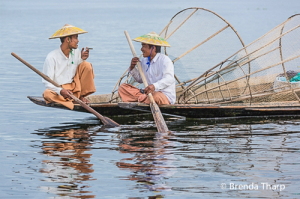Once
you’ve developed skill to observe people, without direct stares, you’ll
multiply your opportunities to capture candid moments. Develop your ability to “people watch” by
visiting popular locations, such as festivals, train stations, markets and the
like. Such places are the easiest to
observe people on the move, without standing out as a voyeur. These kinds of localities are great for getting
the “hang” of people watching, without being obvious.
It
is here that you’ll become more focused online photography classes to the nuances of gestures and body language and how they
might bring “moments” and emotions to the photos you capture.
Become
Invisible
Choose
a spot and stay there. Soon you’ll become “part of the furniture” and go
unnoticed. This is when the candid photos begin. This technique requires time
and patience for the situation to happen – and for you to capture telling and
compelling photographs online photography courses. Not all locations
are the same, of course. If you’re one
of three people at a sidewalk cafe, chances are your “invisibility” will take a
while. The more crowded and fluid the
situation becomes, the better your chances are of capturing such images in
shorter time.
Try
to blend in with those around you. Stay
away from bright, flashy clothes and a big camera bag. Be quiet and discreet. One camera, one lens will do. And be sure to have your camera / smartphone
on the ready – on the chair next to you or in your hand and on your lap. Your aim is to capture that peak “moment” of
a situation you’ve had your eye on.
With
camera autofocus systems being what they are today, there’s no one who can
focus quicker, manually. Let your camera
doe the work and place all your attention to the scene and subject. Multi-focus
points work well for capturing the subject at the peak moment of action, but if
you’re using just one focal point centred in your viewfinder, don’t forget to recompose
your shot before squeezing the shutter button.
Centred subjects are much less dynamic and interesting than those
positioned slightly off-centre or moved to a “rule-of-thirds” location.
There's
a fine line between being part of a situation and simultaneously removed
enough from it to anticipate moments and capture them at their peak. If
you are the centre of attention, you won't be getting those moments.
Instead, another photographer might be capturing them of you! So
the aim is to be involved, but not to the point where all eyes are on you.
It's a dance of sort, where you enter conversations and leave them again
and where you learn just when to pull back to get the shot. It takes
practice and the more you do it, the more intuitive this "dance"
becomes.
Whether
showcasing a restaurant or hotel, marketing a house or flat,
photographing for an interior designer or simply taking pictures for
your home decor blog, interior photography is playing an increasingly
important role online and in print. But today’s audience is sophisticated. The bar is set high. It takes a creative blend of camera craft, design and professionalism to catch the viewer’s eye these days. So here are some tips on just how to do that.
Choose Your Kit:
Quick “snappies” with a smartphone just don’t cut it. But stunning interior photography doesn’t mean an expensive “Flag Ship” camera and a multitude of lenses, either.However, you will need a few basics. For starters, a wide angle lens in the 16mm – 24mm range will enable you to capture an expansive perspective from the corners of whatever space you’re working in. Slipping a 50mm or 55mm “Standard” lens into your bag is a good idea, too. You’ll want to include close-ups of details in your layout, so this and even a macro lens for still finer details, will be definitely to your advantage.
Make a Plan:
Even before the camera is pulled from the bag, there
are few important things to consider – like who is the client (not
dismissing that it could be you, either)? What is the end goal of the interior shoot? What market is being aimed at? Keep in mind too that each client has his or her own set of requirements. Say, for example, you’ll be photographing for an interior designer’s portfolio. You will want to know exactly what kinds of images are needed. Should you focus on decorative elements in the room or is it a particular ambience that is most important? In which case “lighting” will play a major role. You may even want to add decorative items to a room to create a certain atmosphere. Carefully positioned cushions or a stack of magazines, for example, can bring much needed character to the overall interior scene.
Or let’s say it’s a restaurant shoot, whereby your aim would be to capture both atmosphere and decor details, along with people in the images. The goal such approach, of course, being to entice customers to come and dine in a friendly or romantic surrounding.
Whenever appropriate too, try to tell a story through your images. Focus on interesting details that make the place unique. Involve people as models to create a congenial mood. And reassess your styling. Even the smallest of details can make a difference.
- See more at: http://www.thecompellingimage.com/blog/4-capturing-interiors-like-a-pro#sthash.lxGEuPa9.dpuf


